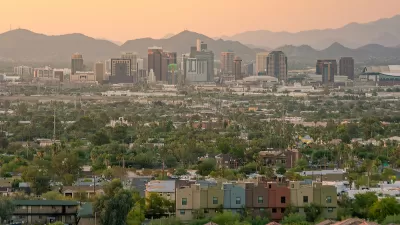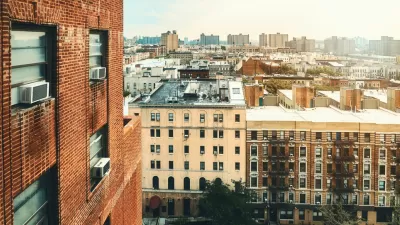The country’s economic pie is sliced up differently now as growth in metropolitan areas involves either income or population increases—but not both.

Jed Kolko takes a closer look at geographic inequality in the United States and says the picture is more complicated than just high per-person income concentrated in certain metropolitan areas.
The income gap has increased between rich and poor areas, but the dominance of a small group of places with high total income levels has decreased over time. "In fact, economic activity — as measured by total income — is less concentrated in a handful of top metro areas today than it has been during most of the past half-century," says Kolko.
In addition, metros where income is rising are not the same places where populations are increasing, he notes. “In other words, in almost all cases, economically successful places in America have gotten bigger or richer but not both.”
In rich places, the lack of population growth is due largely to a lack of housing and high costs, which push out households unable to take on the financial burdens. "But these constraints in rich places may also help spread the wealth, by shifting growth to a wider set of more affordable places where a lower cost of living more than offsets lower salaries for most occupations," writes Kolko.
FULL STORY: Yes, Rich Cities Are Getting Richer. But That’s Not the Whole Story.

Maui's Vacation Rental Debate Turns Ugly
Verbal attacks, misinformation campaigns and fistfights plague a high-stakes debate to convert thousands of vacation rentals into long-term housing.

Planetizen Federal Action Tracker
A weekly monitor of how Trump’s orders and actions are impacting planners and planning in America.

Chicago’s Ghost Rails
Just beneath the surface of the modern city lie the remnants of its expansive early 20th-century streetcar system.

Bend, Oregon Zoning Reforms Prioritize Small-Scale Housing
The city altered its zoning code to allow multi-family housing and eliminated parking mandates citywide.

Amtrak Cutting Jobs, Funding to High-Speed Rail
The agency plans to cut 10 percent of its workforce and has confirmed it will not fund new high-speed rail projects.

LA Denies Basic Services to Unhoused Residents
The city has repeatedly failed to respond to requests for trash pickup at encampment sites, and eliminated a program that provided mobile showers and toilets.
Urban Design for Planners 1: Software Tools
This six-course series explores essential urban design concepts using open source software and equips planners with the tools they need to participate fully in the urban design process.
Planning for Universal Design
Learn the tools for implementing Universal Design in planning regulations.
planning NEXT
Appalachian Highlands Housing Partners
Mpact (founded as Rail~Volution)
City of Camden Redevelopment Agency
City of Astoria
City of Portland
City of Laramie





























